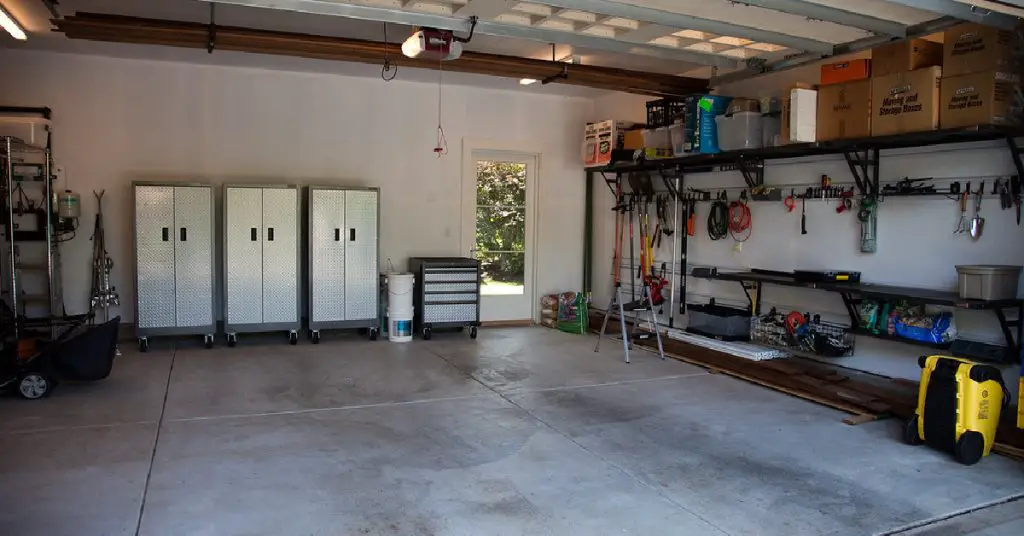As trucks and SUVs continue to grow in size, many homeowners are finding their existing garages are too small to accommodate these larger vehicles. Extending your garage can be an excellent solution, allowing you to protect your investment and maintain convenient indoor parking. In this comprehensive guide, we’ll explore various methods on how to extend garage to fit truck and create the perfect space for your truck or SUV.
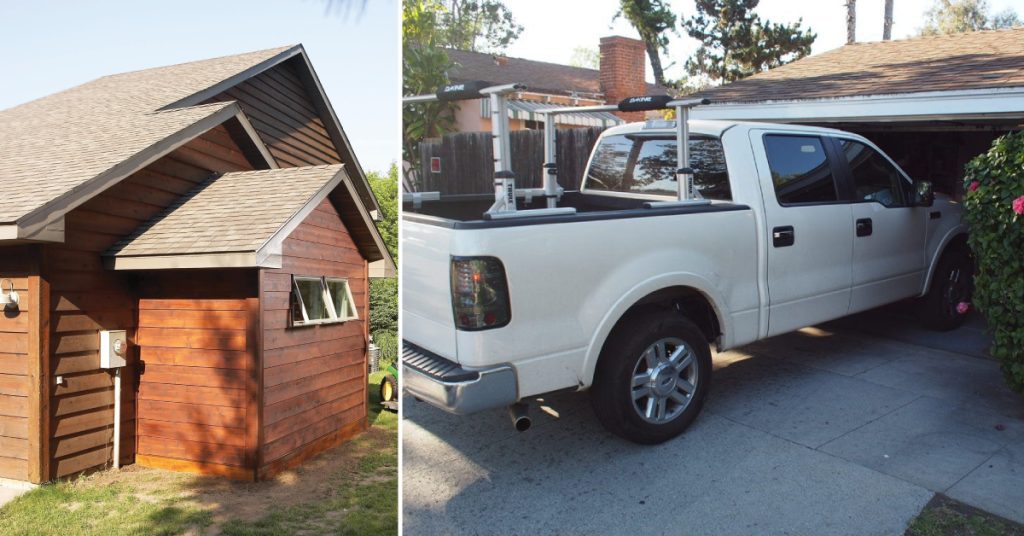
Key Takeaways:
- Four main options: lengthening, widening, increasing height, or creating a bump-out
- Professional help often necessary for structural integrity and code compliance
- Costs range from $10,000 to $25,000 for professional extensions
- Consider alternatives like roll-pan bumpers or car lifts if full extension isn’t feasible
Understanding the Challenge
Before diving into extension options, it’s crucial to understand the dimensions you’re working with:
- Measure your truck’s length, width, and height precisely.
- Measure your garage’s current dimensions.
- Calculate the difference to determine how much additional space you need.
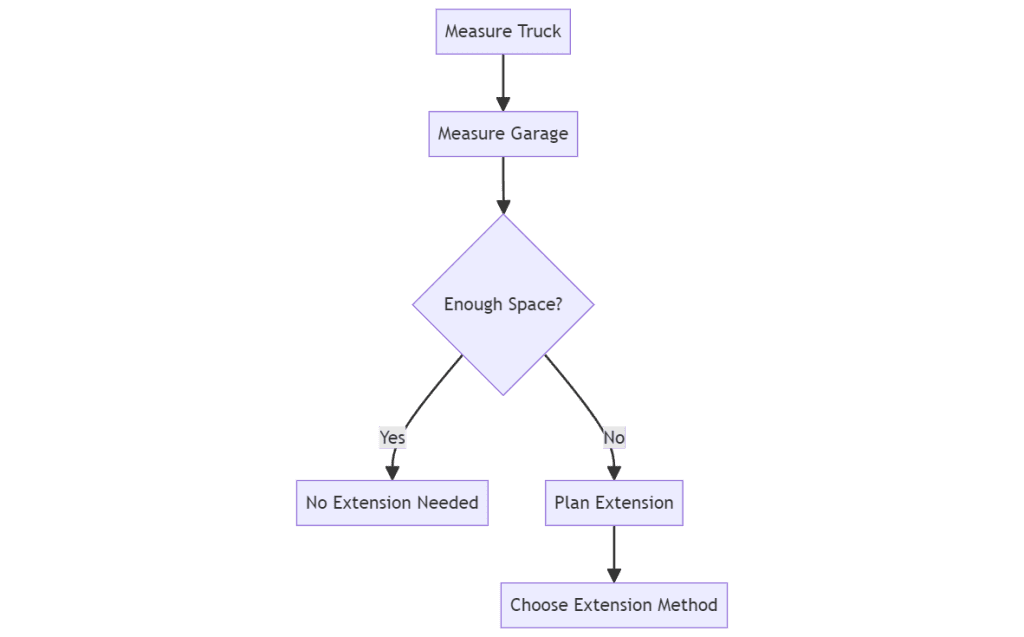
4 Effective Options for How to Extend Garage to Fit Truck
Here are the four effective options for how to extend garage to fit truck:
1. Lengthening the Garage
Extending the length of your garage is often the most straightforward solution for accommodating longer vehicles.
Benefits:
- Creates more workspace
- Allows for additional storage
- Can be combined with a workshop area
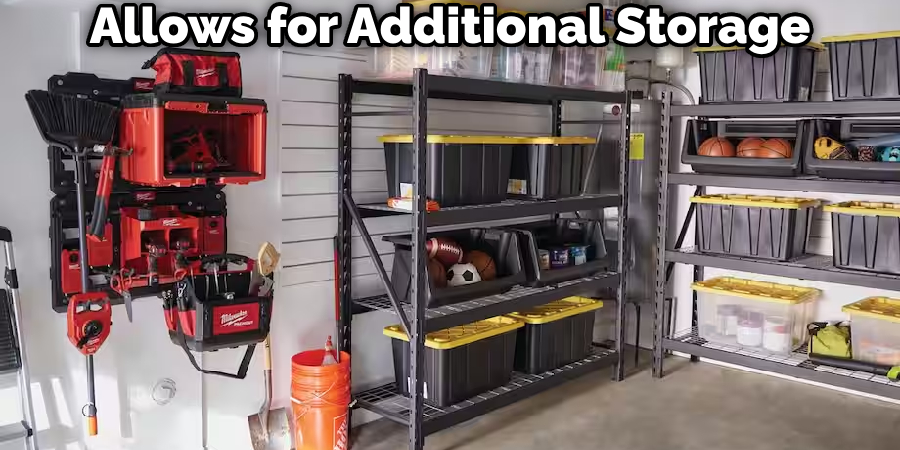
Considerations:
- Requires extending the foundation
- May need zoning approval
- Could impact outdoor space
2. Widening the Garage
If your truck is too wide for your current garage, widening the structure might be necessary.
Benefits:
- Can accommodate multiple vehicles side-by-side
- Provides more maneuvering space
Considerations:
- May be limited by property boundaries
- Requires significant structural changes
- Could impact driveway layout
3. Increasing Garage Height
For taller trucks or those with roof racks, increasing the garage height might be the solution.
Benefits:
- Accommodates lifted trucks or vehicles with roof accessories
- Can create space for overhead storage
Considerations:
- May require raising the roof or lowering the floor
- Could impact the home’s exterior aesthetics
- Potentially complex and costly

4. Creating a Bump-Out
A bump-out is a small extension added to one side or end of the garage.
Benefits:
- Can provide just enough extra space without a full extension
- Often less expensive than full extensions
- May not require extensive permits
Considerations:
- Limited in size
- May look awkward if not well-designed
You Can Check It Out to Measure Garage Door Rollers.
DIY vs. Professional Extension
While some minor modifications can be DIY projects, most garage extensions require professional expertise.
Reasons to Hire a Professional:
- Ensures structural integrity
- Handles permit and zoning requirements
- Manages complex tasks like foundation work and electrical modifications
- Guarantees the work meets local building codes
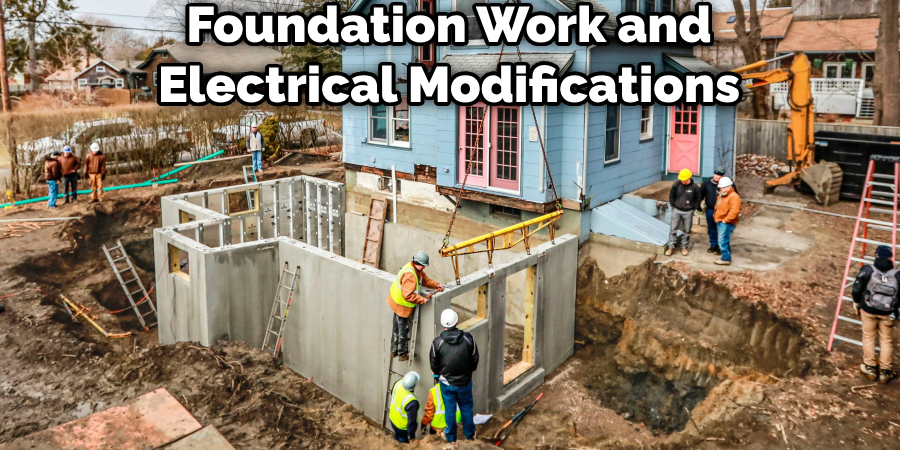
Cost Considerations
The cost of extending a garage can vary widely based on the chosen method and local factors. On average, expect to invest between $10,000 to $25,000 for a professional extension. Factors affecting cost include:
- Extent of the extension
- Materials used
- Local labor costs
- Permit fees
- Any additional features (e.g., upgraded doors, windows)
Alternative Solutions
If a full extension isn’t feasible, consider these alternatives:
- Install a Roll-Pan Bumper: This can save a few inches in length.
- Use Car Lifts: These allow you to stack vehicles vertically.
- Create Angled Parking: Sometimes, parking at an angle can help fit longer vehicles.
- Optimize Storage: Use wall and ceiling storage to maximize space for your vehicle.
Planning Your Extension
- Check Local Regulations: Understand zoning laws and obtain necessary permits.
- Consult Professionals: Get input from architects or contractors experienced in garage extensions.
- Consider Future Needs: Plan for potential future vehicle changes or additional storage requirements.
- Budget Carefully: Include a contingency fund for unexpected expenses.
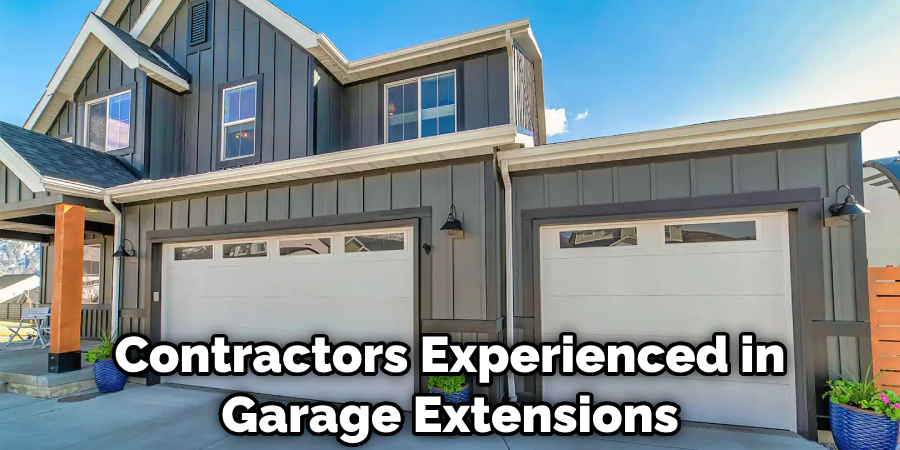
FAQs About How to Extend Garage to Fit Truck
Can You Extend the Length of Your Garage?
Extending a garage involves careful planning, checking local regulations, and assessing available space. The process typically includes foundation work, framing, roofing, and finishing to match the existing structure. While it can provide valuable extra space, it’s important to consider costs, structural implications, and potential impact on property value before proceeding.
Can I Extend Over My Garage?
Extending over a garage is possible but requires careful planning. Key considerations include structural integrity, local zoning laws, permits, and building codes. While it can add valuable living space, professional help is often necessary due to the complexity of aligning floors, reinforcing structures, and extending utilities.
Can I Extend My Garage Without Planning?
A permit is typically required for most garage modifications and extensions, as local zoning laws and building codes regulate the size, height, and location of garages. Before proceeding, check with your local building division for specific requirements, review zoning ordinances, and ensure compliance with development regulations to avoid potential issues.
Conclusion
Extending your garage to fit a truck can significantly enhance your home’s functionality and protect your vehicle investment. By carefully considering your options, planning meticulously, and working with professionals when needed, you can create the perfect space for your truck or SUV. Remember to balance your current needs with potential future requirements to ensure your garage extension serves you well for years to come.
By following this guide, you’ll be well-equipped to navigate the process of extending your garage, ensuring your new truck fits comfortably and securely in its new home.


